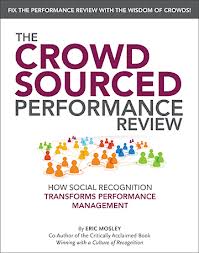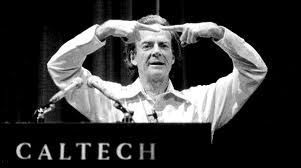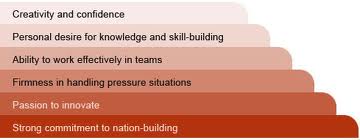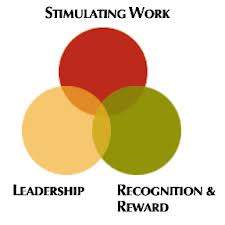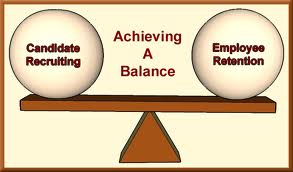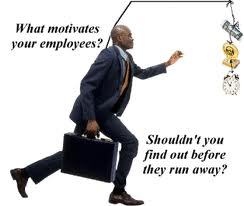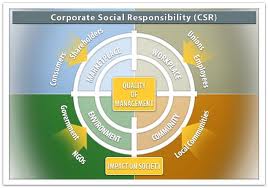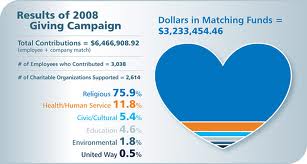Blog Archives
Why Jugglestars? How will this benefit you?
Posted by Hindol Datta
Consider this. Your professional career is a series of projects. Employers look for accountability and performance, and they measure you by how you fare on your projects. Everything else, for the most part, is white noise. The projects you work on establish your skill set and before long – your career trajectory. However, all the great stuff that you have done at work is for the most part hidden from other people in your company or your professional colleagues. You may get a recommendation on LinkedIn, which is fairly high-level, or you may receive endorsements for your skills, which is awesome. But the Endorsements on LinkedIn seem a little random, don’t they? Wouldn’t it be just awesome to recognize, or be recognized by, your colleagues for projects that you have worked on. We are sure that there are projects that you have worked on that involves third-party vendors, consultants, service providers, clients, etc. – well, now you have a forum to send and receive recognition, in a beautiful form factor, that you can choose to display across your networks.
Imagine an employee review. You must have spent some time thinking through all the great stuff that you have done that you want to attach to your review form. And you may have, in your haste, forgotten some of the great stuff that you have done and been recognized for informally. So how cool would it be to print or email all the projects that you’ve worked on and the recognition you’ve received to your manager? How cool would it be to send all the people that you have recognized for their phenomenal work? For in the act of participating in the recognition ecosystem that our application provides you – you are an engaged and prized employee that any company would want to retain, nurture and develop.
Now imagine you are looking for a job. You have a resume. That is nice. And then the potential employer or recruiter is redirected to your professional networks and they have a glimpse of your recommendations and skill sets. That is nice too! But seriously…wouldn’t it be better for the hiring manager or recruiter to have a deeper insight into some of the projects that you have done and the recognition that you have received? Wouldn’t it be nice for them to see how active you are in recognizing great work of your other colleagues and project co-workers? Now they would have a more comprehensive idea of who you are and what makes you tick.
We help you build your professional brand and convey your accomplishments. That translates into greater internal development opportunities in your company, promotion, increase in pay, and it also makes you more marketable. We help you connect to high-achievers and forever manage your digital portfolio of achievements that can, at your request, exist in an open environment. JuggleStars.com is a great career management tool.
Check out www.jugglestars.com
.
Posted in Employee Engagement, Employee retention, Extrinsic Rewards, Innovation, Intrinsic Rewards, Leadership, Learning Organization, Learning Process, Motivation, Organization Architecture, Recognition, Rewards, Social Dynamics, Social Network, Social Systems, Talent Management
Tags: communication channel, conversation, crowdsource, employee engagement, employee recognition, extrinsic motivation, intrinsic motivation, learning organization, mass psychology, social network, social systems, talent management
JuggleStars launched! Great Application for Employee Recognition.
Posted by Hindol Datta
About JuggleStars www.jugglestars.com
Please support Jugglestars. This is an Alpha Release. Use the application in your organization. The Jugglestars team will be adding in more features over the next few months. Give them your feedback. They are an awesome team with great ideas. Please click on www.jugglestars.com and you can open an account, go to Account Settings and setup your profile and then you are pretty much ready to go to recognize your team and your colleagues at a project level.
Posted in Corporate Social Responsibility, Employee Engagement, Extrinsic Rewards, Gamification, Innovation, Intrinsic Rewards, Leadership, Learning Organization, Recognition, Rewards, Social Causes, Social Network, Social Systems, Talent Management
Tags: communication channel, connection, conversation, employee engagement, employee recognition, extrinsic motivation, intrinsic motivation, learning organization, organization architecture, social network, social systems, talent management, value management
MECE Framework, Analysis, Synthesis and Organization Architecture toward Problem-Solving
Posted by Hindol Datta
MECE is a thought tool that has been systematically used in McKinsey. It stands for Mutually Exclusive, Comprehensively Exhaustive. We will go into both these components in detail and then relate this to the dynamics of an organization mindset. The presumption in this note is that the organization mindset has been engraved over time or is being driven by the leadership. We are looking at MECE since it represents a tool used by the most blue chip consulting firm in the world. And while doing that, we will , by the end of the article, arrive at the conclusion that this framework alone will not be the panacea to all investigative methodology to assess a problem – rather, this framework has to reconcile with the active knowledge that most things do not fall in the MECE framework, and thus an additional system framework is needed to amplify our understanding for problem solving and leaving room for chance.
So to apply the MECE technique, first you define the problem that you are solving for. Once you are past the definition phase, well – you are now ready to apply the MECE framework.
MECE is a framework used to organize information which is:
- Mutually exclusive: Information should be grouped into categories so that each category is separate and distinct without any overlap; and
- Collectively exhaustive: All of the categories taken together should deal with all possible options without leaving any gaps.
In other words, once you have defined a problem – you figure out the broad categories that relate to the problem and then brainstorm through ALL of the options associated with the categories. So think of it as a mental construct that you move across a horizontal line with different well defined shades representing categories, and each of those partitions of shades have a vertical construct with all of the options that exhaustively explain those shades. Once you have gone through that exercise, which is no mean feat – you will be then looking at an artifact that addresses the problem. And after you have done that, you individually look at every set of options and its relationship to the distinctive category … and hopefully you are well on your path to coming up with relevant solutions.
Now some may argue that my understanding of MECE is very simplistic. In fact, it may very well be. But I can assure you that it captures the essence of very widely used framework in consulting organizations. And this framework has been imported to large organizations and have cascaded down to different scale organizations ever since.
Here is a link that would give you a deeper understanding of the MECE framework:
http://firmsconsulting.com/2010/09/22/a-complete-mckinsey-style-mece-decision-tree/
Now we are going to dig a little deeper. Allow me to digress and take you down a path less travelled. We will circle back to MECE and organizational leadership in a few moments. One of the memorable quotes that have left a lasting impression is by a great Nobel Prize winning physicist, Richard Feynman.
“I have a friend who’s an artist and has sometimes taken a view which I don’t agree with very well. He’ll hold up a flower and say “look how beautiful it is,” and I’ll agree. Then he says “I as an artist can see how beautiful this is but you as a scientist takes this all apart and it becomes a dull thing,” and I think that he’s kind of nutty. First of all, the beauty that he sees is available to other people and to me too, I believe. Although I may not be quite as refined aesthetically as he is … I can appreciate the beauty of a flower. At the same time, I see much more about the flower than he sees. I could imagine the cells in there, the complicated actions inside, which also have a beauty. I mean it’s not just beauty at this dimension, at one centimeter; there’s also beauty at smaller dimensions, the inner structure, also the processes. The fact that the colors in the flower evolved in order to attract insects to pollinate it is interesting; it means that insects can see the color. It adds a question: does this aesthetic sense also exist in the lower forms? Why is it aesthetic? All kinds of interesting questions which the science knowledge only adds to theexcitement, the mystery and the awe of a flower! It only adds. I don’t understand how it subtracts.”
The above quote by Feynman lays the groundwork to understand two different approaches – namely, the artist approaches the observation of the flower from the synthetic standpoint, whereas Feynman approaches it from an analytic standpoint. Both do not offer views that are antithetical to one another: in fact, you need both to gather a holistic view and arrive at a conclusion – the sum is greater than the parts. Feynman does not address the essence of beauty that the artist puts forth; he looks at the beauty of how the components and its mechanics interact well and how it adds to our understanding of the flower. This is very important because the following dialogue with explore another concept to drive this difference between analysis and synthesis home.
There are two possible ways of gaining knowledge. Either we can proceed from the construction of the flower ( the Feynman method) , and then seek to determine the laws of the mutual interaction of its parts as well as its response to external stimuli; or we can begin with what the flower accomplishes and then attempt to account for this. By the first route we infer effects from given causes, whereas by the second route we seek causes of given effects. We can call the first route synthetic, and the second analytic.
We can easily see how the cause effect relationship is translated into a relationship between the analytic and synthetic foundation.
A system’s internal processes — i.e. the interactions between its parts — are regarded as the cause of what the system, as a unit, performs. What the system performs is thus the effect. From these very relationships we can immediately recognize the requirements for the application of the analytic and synthetic methods.
The synthetic approach — i.e. to infer effects on the basis of given causes — is therefore appropriate when the laws and principles governing a system’s internal processes are known, but when we lack a detailed picture of how the system behaves as a whole.
Another example … we do not have a very good understanding of the long-term dynamics of galactic systems, nor even of our own solar system. This is because we cannot observe these objects for the thousands or even millions of years which would be needed in order to map their overall behavior.
However, we do know something about the principles, which govern these dynamics, i.e. gravitational interaction between the stars and planets respectively. We can therefore apply a synthetic procedure in order to simulate the gross dynamics of these objects. In practice, this is done with the use of computer models which calculate the interaction of system parts over long, simulated time periods.
The analytical approach — drawing conclusions about causes on the basis of effects – is appropriate when a system’s overall behavior is known, but when we do not have clear or certain knowledge about the system’s internal processes or the principles governing these. On the other hand, there are a great many systems for which we neither have a clear and certain conception of how they behave as a whole, nor fully understand the principles at work which cause that behavior. Organizational behavior is one such example since it introduces the fickle spirits of the employees that, at an aggregate create a distinct character in the organization.
Leibniz was among the first to define analysis and synthesis as modern methodological concepts:
“Synthesis … is the process in which we begin from principles and [proceed to] build up theorems and problems … while analysis is the process in which we begin with a given conclusion or proposed problem and seek the principles by which we may demonstrate the conclusion or solve the problem.”
So we have wandered down this path of analysis and synthesis and now we will circle back to MECE and the organization. MECE framework is a prime example of the application of analytics in an organization structure. The underlying hypothesis is that the application of the framework will illuminate and add clarity to understanding the problems that we are solving for. But here is the problem: the approach could lead to paralysis by analysis. If one were to apply this framework, one would lose itself in the weeds whereas it is just as important to view the forest. So organizations have to step back and assess at what point we stop the analysis i.e. we have gathered information and at what point we set our roads to discovering a set of principles that will govern the action to solve a set of problems. It is almost always impossible to gather all information to make the best decision – especially where speed, iteration, distinguishing from the herd quickly, stamping a clear brand etc. are becoming the hallmarks of great organizations.
Applying the synthetic principle in addition to “MECE think” leaves room for error and sub-optimal solutions. But it crowd sources the limitless power of imagination and pattern thinking that will allow the organization to make critical breakthroughs in innovative thinking. It is thus important that both the principles are promulgated by the leadership as coexisting principles that drive an organization forward. It ignites employee engagement, and it imputes the stochastic errors that result when employees may not have all the MECE conditions checked off.
In conclusion, it is important that the organization and its leadership set its architecture upon the traditional pillars of analysis and synthesis – MECE and systems thinking. And this architecture serves to be the springboard for the employees that allows for accidental discoveries, flights of imagination, Nietzschean leaps that transform the organization toward the pathway of innovation, while still grounded upon the bedrock of facts and empirical observations.
Posted in Business Process, Employee Engagement, Innovation, Leadership, Learning Organization, Learning Process, Management Models, Model Thinking, Motivation, Organization Architecture, Recognition, Risk Management, Social Dynamics, Social Systems
Tags: Analysis, creativity, employee engagement, employee recognition, innovation, learning organization, mass psychology, Mental Construct, Mental Models, organization architecture, social network, social systems, Synthesis, Systems Thinking, talent management, uncertainty
Nice Infographic by Salesforce on Employee Motivation
Posted by Hindol Datta
Posted in Employee Engagement, Employee retention, Extrinsic Rewards, Intrinsic Rewards, Learning Organization, Motivation, Organization Architecture, Recognition, Rewards, Talent Management
Tags: employee engagement, employee recognition, extrinsic motivation, intrinsic motivation, learning organization, organization architecture, rewads, rewards, talent management
Implementing Balanced Scorecard Model for Employee Engagement
Posted by Hindol Datta
The Balanced Scorecard Model (BSC) was introduced by Kaplan & Norton in their book “The Balanced Scorecard” (1996). It is one of the more widely used management tools in large organizations.
One of the major strengths of the BSC model is how the key categories in the BSC model links to corporate missions and objectives. The key categories which are referred to as “perspectives” illustrated in the BSC model are:
Financial Perspective:
Kaplan and Norton do not disregard the traditional need for financial data. Timely and accurate data will always be a priority, and managers will do whatever necessary to provide it. In fact, often there is more than enough handling and processing of financial data. With the implementation of a corporate database, it is hoped that more of the processing can be centralized and automated. But the point is that the current emphasis on financials leads to the “unbalanced” situation with regard to other perspectives. There is perhaps a need to include additional financial-related data, such as risk assessment and cost-benefit data, in this category.
Customer Perspective
Recent management philosophy has shown an increasing realization of the importance of customer focus and customer satisfaction in any business. These are leading indicators: if customers are not satisfied, they will eventually find other suppliers that will meet their needs. Poor performance from this perspective is thus a leading indicator of future decline, even though the current financial picture may look good. In developing metrics for satisfaction, customers should be analyzed in terms of kinds of customers and the kinds of processes for which we are providing a product or service to those customer groups
Internal Business Process Perspective
This perspective refers to internal business processes. Metrics based on this perspective allow the managers to know how well their business is running, and whether its products and services conform to customer requirements (the mission). These metrics have to be carefully designed by those who know these processes most intimately; with our unique missions these are not necessarily something that can be developed by outside consultants. My personal opinion on this matter is that the internal business process perspective is too important and that internal owners or/and teams take ownership of understanding the process.
Learning and Growth Perspective
This perspective includes employee training and corporate cultural attitudes related to both individual and corporate self-improvement. In a knowledge-worker organization, people — the only repository of knowledge — are the main resource. In the current climate of rapid technological change, it is becoming necessary for knowledge workers to be in a continuous learning mode. Metrics can be put into place to guide managers in focusing training funds where they can help the most. In any case, learning and growth constitute the essential foundation for success of any knowledge-worker organization.
Kaplan and Norton emphasize that ‘learning’ is more than ‘training’; it also includes things like mentors and tutors within the organization, as well as that ease of communication among workers, the engagement of the workers, the potential of cross-training that would create pockets of bench strength and switch hitters, and other employee specific programs that allows them to readily get help on a problem when it is needed. It also includes technological tools; what the Baldrige criteria call “high performance work systems.”
Innovation Perspective
This perspective was appended to the above four by Bain and Company. It refers to the vitality of the organization and its culture to provide the appropriate framework to encourage innovation. Organizations have to innovate. Innovation is becoming the key distinctive element in great organizations, and high levels of innovation or innovative thinking are talent magnets.
Taking the perspectives a step further, Kaplan and Cooper instituted measures and targets associated with each of those targets. The measures are geared around what the objective is associated with each of the perspectives rather than a singular granule item. Thus, if the objective is to increase customer retention, an appropriate metric or set of metrics is around how to measure the objective and track success to it than defining a customer.
One of the underlying presumptions in this model is to ensure that the key elements around which objectives are defined are done so at a fairly detailed level and to the extent possible – defined so much so that an item does not have polymorphous connotations. In other words, there is and can be only a single source of truth associated with the key element. That preserves the integrity of the model prior to its application that would lead to the element branching out into a plethora of objectives associated with the element.
Objectives, Measures, Targets and Initiatives
Within each of the Balance Scorecard financial, customer, internal process, learning perspectives and innovation perspectives, the firm must define the following:
Strategic Objectives – what the strategy is to achieve in that perspective
Measures – how progress for that particular objective will be measured
Targets – the target value sought for each measure
Initiatives – what will be done to facilitate the reaching of the target?
As in models and analytics, the information that the model spouts could be rife with a cascade of metrics. Metrics are important but too many metrics associated with the perspectives may diffuse the ultimate end that the perspectives represent.
Hence, one has to exercise restraint and rigor in defining a few key metrics that are most relevant and roll up to corporate objectives. As an example, outlined below are examples of metrics associated with the perspectives:
Financial performance (revenues, earnings, return on capital, cash flow);
Customer value performance (market share, customer satisfaction measures, customer loyalty);
Internal business process performance (productivity rates, quality measures, timeliness);
Employee performance (morale, knowledge, turnover, use of best demonstrated practices);
Innovation performance (percent of revenue from new products, employee suggestions, rate of improvement index);
To construct and implement a Balanced Scorecard, managers should:
- Articulate the business’s vision and strategy;
- Identify the performance categories that best link the business’s vision and strategy to its results (e.g., financial performance, operations, innovation, and employee performance);
- Establish objectives that support the business’s vision and strategy;
- Develop effective measures and meaningful standards, establishing both short-term milestones and long-term targets;
- Ensure company wide acceptance of the measures;
- Create appropriate budgeting, tracking, communication, and reward systems;
- Collect and analyze performance data and compare actual results with desired performance;
- Take action to close unfavorable gaps.
The link above contains a number of templates and examples that you may find helpful.
I have discussed organization architecture and employee engagement in our previous blogs. The BSC is a tool to encourage engagement while ensuring a tight architecture to further organizational goals. You may forget that as an employee, you occupy an important place in the ecosystem; the forgetting does not speak to your disenchantment toward the job, neither to your disinclination toward the uber-goals of the organization. The forgetting really speaks to potentially a lack of credible leadership that has not taken the appropriate efforts to engage the organization by pushing this structure that forces transparency. The BSC is one such articulate model that could be used, even at its crudest form factor, to get employees informed and engaged.
Posted in Business Process, Employee Engagement, Employee retention, Financial Metrics, Financial Process, Innovation, Leadership, Learning Organization, Learning Process, Management Models, Organization Architecture, Recognition, Risk Management, Social Dynamics, Talent Management
Tags: bain and company, balanced scorecard, business process, communication channel, employee engagement, employee recognition, extrinsic motivation, financial process, innovation, intrinsic motivation, learning organization, management tools, mass psychology, model, organization architecture, rewads, risk management, social systems, strategy, talent management, value, value management
Economics of Employee Retention
Posted by Hindol Datta
It is a common fact that employee turnover in a company has significant cost consequences. HR departments and managers deploy programs to create great work environments to prevent employee turnover. Some industries have higher turnover than others. However, despite the expected high turnover rate, companies are realizing that the acquisition cost of getting a new employee to replace someone who has left is meaningfully higher.
There are a number of tangible and intangible costs that have been connected to employee turnover:
- Pre-departure costs—such as the reduced productivity of an employee who is discontented and using company time to look for another job, plus the costs of any efforts to retain the employee once he or she has announced his intent to leave.
- Termination costs—those related to termination of employment, including exit interviews, security precautions, pay calculations, and other recordkeeping costs, plus the unemployment tax impact and payments for severance, accrued vacation time, retirement plan contributions, and any extension to benefits.
- Recruitment costs—related to advertising, recruiting, interviewing, pre-employment evaluations, security and background checks, hiring bonuses, relocation, etc.
- Training costs—the cost of training new employees in necessary job skills can be significant.
- Productivity costs—related to new workers, who are generally less productive, require more supervision, and contribute less to customer satisfaction.
- Vacancy costs—lost sales or lost productivity while the position remains vacant, plus the cost of overtime or temporary help to cover fill in.
- Corporate culture – high turnover is a reflection of corporate culture. If potential candidate become aware of high turnover, this could further increase the corporate’s acquisition costs.
It has been estimated that the cost of employee turnover could range anywhere from 50% of the employee’s salary up to 500% of the employee’s salary.
Employee turnover= (Number of separations per year/ Average number of employees per year)*100
The general median is 130%. Here is a specific scenario to think through:
Assume there are 100 employees in an organization. The average compensation is $50K per year. The employee turnover rate is 10%. That means about 10 employees leave the company in any given year. If the average cost is $50K per year, and the median is 130% or 1.3X compensation cost, then the total impact in this scenario would be $650,000. Thus, it represents almost 13% of the run rate of payroll. If there are programs that could stem the flow out by 50%, that would save $325,000 which represents 6.5% of payroll. This is a fairly significant statistic. And since 130% is a median across all industries, I contend that knowledge industries have a higher median than industries that are driven by low or medium skilled workers at the lower end of the pay scale.
So what are some of the ways that would minimize this turnover? First, whatever the turnover number, the company would want to compare themselves to similar organizations in the specific industry or region. In fact, some turnover may be healthy to the company. Second, one single program may not be good enough. They have to consider multiple programs that could be deployed concurrently or over time.
So, companies seeking a performance-oriented approach to employee retention might seek to enhance work value in some of the following ways (courtesy of the Performance Improvement Council of the Incentive Marketing Association):
Employee involvement in job design, goal setting, and selection of rewards.
Clear communication about company goals and ways employees can contribute to and share in its success.
Incentive programs that reward people for significant and measurable performance improvements.
Recognition programs offering meaningful recognition to employees for both tangible and intangible contributions to their company.
Project-oriented approaches in which all employees can work on diverse, limited-term assignments rather than being sequestered within a single department or function.
Developing talent exchanges to enhance careers by connecting employees with appropriate projects, roles, and positions within their companies.
Training through coordinated programs designed to enhance employee knowledge and then rewarding employees for that increased knowledge. Consider cross training to enhance skills and improve productivity. This both satisfies employees and equips them to perform better.
Fostering feelings of support by setting clear goals for employees and rewarding them upon accomplishment, and by promoting consistent values and recognizing people who embody them. This directs retention resources to actions and values that have a measurable benefit to the organization.
Creating an atmosphere of fun with spot “atta-boy” rewards, contests, or meetings, specifically related to organizational goals and values. This creates an atmosphere conducive to retention while keeping the focus on achieving goals.
Addressing the measurement issue by instituting “real-time” goal setting, performance measurement, and skills development programs to ensure that people always know where they stand, and to address performance issues and skill gaps before they become problems.
Fair Compensation. No one said that compensation will have no effect on turnover and retention. Determine a fair wage in your labor market and do what you can to meet it. A fair and equitable wage and benefits package is the foundation for a successful employee retention program.
Build trust. As mentioned above, a “climate of trust” is one of the factors that influence employee retention. Trust is built with employees through fair working conditions, management responsiveness to employee concerns, realistic performance expectations, and open communication, including one-on-one communications between managers and employees whenever possible.
Don’t limit motivation efforts to star employees. Incentive, reward, and recognition programs should be expanded to include as many employees as possible, rather than just the top 5 or 10 percent. Remember, it is the large middle range of employees that can contribute the most in terms of improved productivity and lower turnover costs.
The Role of Motivation
Higher levels of motivation can translate into a 53 percent reduction in employee turnover, according to a recent study by Stephen Condly, associate professor at the University of Central Florida, Orlando, conducted for the SITE Foundation. No retention strategy can succeed without addressing the issue of employee motivation.
“Incentives, Motivation, and Workplace Performance,” a study conducted by the professors at the University of Southern California for the International Society of Performance Improvement, found the following factors critical to fostering motivation and loyalty.
- Work value. The research confirmed that people stay motivated when they value their work, no matter how mundane the task. Someone building a house for low-income tenants might get pleasure from the most arduous labor, knowing the good that can come from the effort. Organizations can foster work value by recognizing contributions in a meaningful way, and regularly communicating the organizational goals toward which each employee can contribute. They can add to satisfaction through use of incentive programs that set goals for quality or quantity, and reward those who achieve or surpass them.
- Training. Many people draw satisfaction from developing the capability to do their jobs better or acquiring additional skills or responsibility.
- Support. Most people gain satisfaction from knowing that their organization appreciates their effort. This often comes in the form of meaningful recognition to those who achieve their goals or who exemplify important organizational values.
- Emotional appeal. Yes, people work better when they feel happy. Properly structured incentive and recognition programs can foster an atmosphere of fun and excitement, even in dreary jobs.
- Measurement. Knowing how one is doing in the pursuit of a goal is another way to create satisfaction. Effective measures of quality and productivity keep employees focused on goals, especially if accompanied with proper recognition when they succeed.
Posted in Employee Engagement, Employee retention, Extrinsic Rewards, Intrinsic Rewards, Leadership, Learning Organization, Organization Architecture, Recognition, Rewards, Social Dynamics, Talent Management
Tags: employee engagement, employee recognition, employee retention, extrinsic motivation, intrinsic motivation, learning organization, organization architecture, rewads, social systems, talent management, value management
Employee Engagement and Corporate Social Responsibility
Posted by Hindol Datta
We start off with the premise – Human beings are good. Absent any constraints, human beings are inclined toward doing good. It is a fair assumption that have stood the test of time and the institutions, at an aggregate level, have for the most part endured and advanced human prosperity and happiness on account of the fundamental premise.
As we continue to thrive and move forward and forge and foray into new branches of knowledge and gather insights into our worlds, internal and external, we have a little more headroom to reach out and engage and contribute to the well being of other people that may not serve any immediate vested interest. Along the way, people have gathered a mix of different capital of various magnitudes – economic capital, intellectual capital, and social or reputation capital – and hence, they are in a better position today, than any time before, to be able sprinkle this capital across local and non-local communities. Thus, economic capital may translate into micro-lending and charity and endowments, intellectual capital may translate into voluntary time associated with teaching and mentorship, and social or reputation capital may translate into giving people opportunities. There is a far greater degree of awareness of larger issues that impinges on the advancement of the human race … issues around environment, conservation, global sustainability, clean energy, medical, basic infrastructure matters, democratic values, food, et al. And to that end, NGO’s, foundations, wealthy donors, corporations, governments, taxpayers, et al have contributed immensely to all of these causes.
Sometime ago I read this article – The Case against Corporate Social Responsibility in the WSJ. (http://online.wsj.com/article/SB10001424052748703338004575230112664504890.html)
The argument was that if corporations ought not to focus on profits and social responsibility since those are competing outcomes that dip into a shared pot of responsibility of enhancing shareholders’ wealth. Yes, the argument has some merit if we were to reduce this argument to fiat consideration. But given the increased awareness of people in a world that is globalized and is under a spotlight of rich social media, this argument carries less weight today than more early years in business history. Talent has indeed become a prized asset, and companies set up structures, with the profit motive in mind, to harness the asset in a needful manner – all to finally serve the interests of the shareholder. But talent has also become fickle and mobile; it is becoming relatively more difficult to handcuff talent to the steering wheel of an organization. The organization is thus, for the sake of long-term sustainability, have to create structures that will encourage loyalty and engagement among the employees. And thus, the organization has to espouse higher aspirational ideals, which may immediately sacrifice short term profits for long term sustainability. I contend that corporate social responsibility is becoming another factor that will increase in importance over the passage of time.
So how do the flow of such events and the presumption of good tie into employee engagement? To stretch the above argument further, it is important for company to provide a supportive framework to allow employees to distribute their capital, should they choose to do so! I am not suggesting that people must distribute the capital, but I am suggesting that they have the opportunity to do so. And when they do, they aptly get recognized because it is still a capital that is being distributed generally with no expectation of immediate return. The returns maybe illusory with respect to formulating tangible financial metrics, but nonetheless it has a lot of importance. Thus, it is important that there are channels and applications and systems in place to encourage social good within the ranks and files of the employees.
Here are some interesting facts that you ought to think through. And these are facts in the context of US only:
1. There are over 1million charities and foundations.
2. The total amount of revenue associated with these charities and foundations are over $1.5 trillion.
3. Almost 50% of the amount is driven by private donations, of which $300 billion are private individual contributions. Private donations represent estates, bequests, etc.
4. There are over 20 million people employed in charity and foundations in the US.
So clearly this is a big and powerful sector. And if companies can provide the structure to support the cause of community engagement among employees, that would only mean that they magnify their community footprint, and hence will have access to the new millennial generation that transcends the extrinsic provisions of the employer-employee contract.
Posted in Charity, Corporate Social Responsibility, Employee Engagement, Extrinsic Rewards, Intrinsic Rewards, Recognition, Rewards, Social Causes, Social Systems
Tags: corporate accountability, corporate social responsibility, employee engagement, employee recognition, extrinsic motivation, intrinsic motivation, social causes, social recognition, social systems, sustainability
Organization Architecture – Evolving strain!
Posted by Hindol Datta
 Innovation is happening at a rapid pace. An organization is being pummeled with new pieces of information, internally and externally, that is forcing pivots to accommodate changing customer needs and incorporating emerging technologies and solutions. Thus, the traditional organization structures have been fairly internally focused. Ronald Coase in his famous paper The Nature of the Firm (1937) had argued that organizations emerge to arrest transactional costs of managing multiple contracts with multiple service providers; the organization represents an efficient organizational unit given all other possible alternatives to coexist in an industrial ecosystem. Read the rest of this entry →
Innovation is happening at a rapid pace. An organization is being pummeled with new pieces of information, internally and externally, that is forcing pivots to accommodate changing customer needs and incorporating emerging technologies and solutions. Thus, the traditional organization structures have been fairly internally focused. Ronald Coase in his famous paper The Nature of the Firm (1937) had argued that organizations emerge to arrest transactional costs of managing multiple contracts with multiple service providers; the organization represents an efficient organizational unit given all other possible alternatives to coexist in an industrial ecosystem. Read the rest of this entry →

